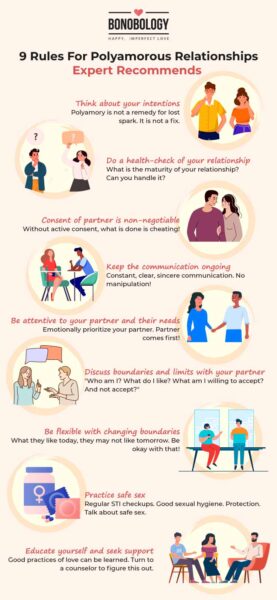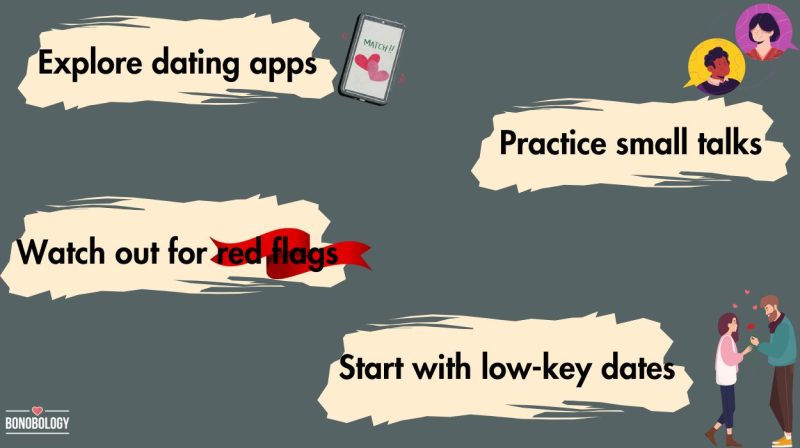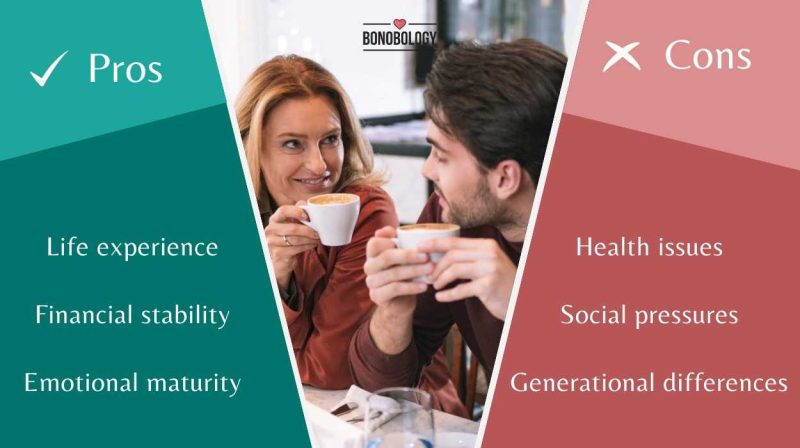We have forever been looking for “the one” or that “soulmate”. We create romanticized versions of a happily-ever-after with that single person we are meant to be with. This idea circles over and over in our media and art, and in our collective imaginations. No wonder it becomes extremely difficult for us to wrap our heads around polyamory and polyamorous relationship rules.
And for good reason. Monogamy, after all, has been at the center of our ideas surrounding love and companionship, across societies. But with this article, and with an expert in our arsenal, our plan is to make it easier for you to sail through the tumultuous waters of polyamory.
Relationship and intimacy coach Shivanya Yogmayaa (internationally certified in the therapeutic modalities of EFT, NLP, CBT, REBT, etc), who specializes in different forms of couples counseling, talked to us on all things polyamorous so that we could bring to you a nuanced take on the topic and help you understand the simplicity that is the basis of this seemingly complex concept.
What Is A Polyamory Relationship?
Table of Contents
Greek Poly, for many, and Latin Amore, for love, together make this nine-lettered word. In contrast, mono means one which is where words like monogamy and monoamory come from. Poly makes us understand that polyamory must mean to love many people. Taking cue from our expert, Shivanya, who put a lot of emphasis on this, we should be adding the word “consensual” to this definition. Polyamory involves being in a relationship, romantic or intimate, with more than one person at the same time, with the consent of everyone involved.
In a polyamorous relationship, partners have the flexibility to explore love beyond the limits of each other. But is polyamory an open relationship? Polyamory, like open relationships such as spouse-swapping or swinging or unicorn dating, is another form of ethical or consensual non-monogamy, but it is important to note that they are not the same.
Shivanya says, “We shouldn’t mistake polyamory as being the same as other forms of relationships with multiple partners. To have a polyamorous relationship, there needs to be an open-relationship criteria but it has to have components of trust and transparency in place, unlike open relationships, where revealing the identity of other partners is not obligatory. Polyamorous partners may also chose to keep the identity of their partner’s partner secret but it is a consensual decision.”
Polyamory is also different from these concepts because polyamory often centers itself around love and intimacy as opposed to something purely sexual. Shivanya says, “Sex may or may not even be an agenda for the people in a polyamorous relationship. There can be platonic polyamorous partners with only emotional needs from each other.”

Polyamory shouldn’t be misunderstood to be a broken relationship where partners don’t have a choice but to reluctantly accept the affair of their partner. Polyamorous relationship are happily consensual and the choice of the people involved. They are both, as a result of happiness, and in pursuit of happiness.
Related Reading: Surviving An Affair- 12 Steps To Reinstate Love And Trust In A Marriage
How Do Polyamorous Relationships Work?
This is a great place to bring in the idea of “compersion”. Compersion is the ability to be happy when your partner is happy even though you may not be the source of that joy. It is considered as the opposite of jealousy. And, to experts, it has seemed like the cornerstone of polyamory. Polyamorists believe monoamory to be a restrictive concept, acknowledging that it is impossible for a single person to fulfill all the needs of a person.
More people means more love. And it should only give you more joy to see your partner receiving more joy. It does need to be said though that it’s not necessary to experience compersion frequently or even at all. There’s no shaming of jealousy in the polyamory community. A partner has the space to express their emotions and needs which are heard and addressed in a healthy, non-judgmental manner. Dealing with jealousy in a polyamorous relationship in a constructive and empathetic manner is an intentional practice.
A concept that involves the coming-together of emotions, love, insecurities, and fears of a group of people will need an unlimited supply of a few things. They are trust, honesty, maturity, transparency, and a lot of communication —constant, often tiring communication— to allow the relationship to not only survive, but thrive.
Shivanya gives us a vital polyamorous relationship advice, “Consent, ongoing and open communication, and clearly defined rules are the three most important things to make polyamorous relationships work.”
Polyamorous relationships have several kinds of structures depending on the number of partners, their equations with each other, and the place of each in relation to the group. Shivanya mentions a few out of the many possible structures:
- The triad or throuple: Three people involved in the relationship where all three need not be involved with each other. Shivanya clarifies, “A man, his female partner, and her female partner are also a triad.”
- The quad: Two polyamorous couples involved with each other
- The polycule: A connected network of people in a polyamourous relationship
- Parallel polyamory: Each individual is aware of the relationships of the other partner, but is not too involved in their partners’ other relationships
Shivanya further talks about the most common form of polyamory today. She says, “Most polyamorous people these days don’t wish to merge their identity, their lives, their responsibilities with the other partner, nor do they feel the need to share homes. They know they are all polyamorous, but they essentially live a solo life, coming together for love.”
In non-hierarchical polyamory, people don’t prioritize one relationship over others. All partners are equally important, and time is allotted as per the bandwidth and need of everyone involved. They don’t necessarily live together as well.

Expert Recommends 9 Most Important Polyamorous Relationship Rules
Polyamory can not be navigated successfully without giving you a load of pain, unless you commit to a set of ground rules. Our expert laid down for us a few polyamorous relationship rules to keep in mind when thinking of or engaging in polyamory while you’re already in a relationship.
1. Think about your intentions behind choosing polyamory
“Why do you seek polyamory?,” ask yourself. There could be many reasons why one would decide to turn toward polyamory. It is important to have clarity on your intentions. Are you trying to “fix” something through polyamory? Because if that is true, “it could lead you toward terrible heartache,” says Shivanya. The foundation of your relationship should be strong to be able to survive the challenges that a polyamorous relationship might bring.
Your intentions will decide the course your relationship will take. Do not attempt polyamory within an existing relationship as a remedy to find its lost spark. Polyamory is a way for people to explore more love together, not to find lost love.
2. Do a health-check of your exisiting relationship to maintain polyamorous relationships
Shivanya says, “Compersion is only possible if two people have not just fallen in love, but are mature in love. Not only are they evolved in themselves, they have spiritual awareness too. Otherwise, multi-partners can cause cracks in their relationships and psychological cracks in themselves.”
Do a self-check: What is the maturity level of your relationship? How mature are you and your partner to deal with completely unfamiliar emotions and feelings? How do you usually deal with strong emotions? How have you fared so far with understanding, identifying and handling conflict and challenges you two have faced? Are you comfortable with sexuality, desire and love? Do you have a healthy relationship with these? What cisheteropatriarchal biases and conditioning do you carry when it comes to love and desire?
Shivanya says, “You may want it, but are you mature enough? Can you commit to polyamorous relationship rules?” These questions will help you decide if you are ready to take a plunge into the polyamorous world.
3. Consent of partner is non-negotiable
In our conversation, Shivnanya called consent as number one of the polyamorous relationship rules, adding, “That’s the only way you can establish trust and transparency. And without these it is not polyamory anymore. What you are involved in is something else.” Is polyamory an open relationship? Yes. Can you go about it by hiding something from your partner? Doing something without their consent? No! That is called cheating. And there is no space for cheating in polyamorous relationship rules.
She adds, “If a person is not ready for you to practise polyamory, the pain, the threat and insecurities, and the negligence they go through at the hands of a pushy partner may harm them a lot.” The role of consent, is in fact, foundational for trust, and vice versa. Always seek active consent of your partner before initiating a polyamorous relationship for yourself. Also, do not manipulate them for their consent. It might give you what you want at the moment, but the relationship is bound to fall flat on its face if it is based on manipulation and insincerity. If consent isn’t possible, then separation might be the best solution.
4. Keep the communication ongoing to maintain a polyamorous relationship
Constant, ongoing communication is key to a beautiful polyamorous relationship. There is nothing worse than a communication gap between you and your partner. Communication in polyamory is about always being on the same page. Shivanya uses the word “ongoing” each time she talks about open communication. Communication needs to be there at all stages, beginning from communicating your desire of polyamory to your partner, to talking about boundaries and consent, having a plan of action, communicating any negative emotions if they arise, having safe words, talking about the constant change in emotions, the insecurities, the joys, and the desires one feels when engaging in polyamory.
Equally important while communicating is what Shivanya calls, “Not misleading communication and not being ambiguous while communicating.” Be sincere with your communication. This is one of the polyamorous relationship rules that insists on clarity and honesty, and is about never leaving your partner behind.

5. Be attentive to your partner and their needs
It is extremely important to be attentive to your current relationship. Shivanya warns, “Not all people in a polyamorous relationship understand or feel compersion all the time. It is very easy for jealousy to creep in, which is why it is very important for partners to be attentive to each other’s emotional needs and states of mind.”
She also interestingly brings in the issue of the crisis of time and the need for effective time management to be able to give enough quality time to each of your relationships, especially if you have a primary one.
6. Discuss boundaries and limits with your partners to have a polyamorous relationship
Be sure to first establish what each of you is comfortable with. Some of the polyamory boundaries examples are checking with your partners how much they want to know about your other partners, dates, sexual life, etc. What facets of your other relationship (or relationships) do your partners NOT want to know about, and which do they wish to be involved in? Also, some partners look forward to getting to know your other partners, and some do not.
Shivanya asks you to be mindful of not pushing the boundaries of your partners. Other polyamory boundaries examples she gives are, “When multiple partners with different backgrounds, personalities and their own set of baggage are involved, the situation can be challenging to navigate. Boundaries and mutual consent help in keeping everyone’s interests intact.”
7. Be flexible with changing boundaries
Be committed to reviewing your emotions with each other. This one of the polyamorous relationship rules that asks you to be flexible. Understand that not everyone will feel comfortable with polyamory all the time. To accept a polyamorous relationship is not easy for many people, especially if it’s new to them. Someone who first said they are okay with it, may change their mind later depending on how they are experiencing it.
You must make a sincere commitment to your partner to always be accepting of their changing boundaries. This trust will allow them to share their insecurities and boundaries with you without the fear of disappointing you, or worse losing your love. On the other hand, you deserve to practise polyamory if that’s who you truly are. And if an existing partner has changed their mind about it, then this should be handled gently, but it could lead to either a resolution or a separation because of conflicting relationship needs.
Related Reading: 7 Types Of Insecurities In A Relationship, And How They Affect You
8. Practice safe sex
“When you are sexually engaging with mutiple partners, you must practice safe sex,” says Shivanya in relation to another one of our most important polyamorous relationship rules. Be extremely mindful of protecting yourself from Sexually Transmitted Infections (STIs). Use protection such as condoms, dental dams, etc. Practice good sexual hygiene and etiquettes. Get tested frequently and routinely. Get comfortable asking your partners for their STI status. Talk about safe sex.
Establish sexual health standards for yourself and be extremely responsible about them. When part of polyamorous relationships, you must look at yourself as part of a larger whole. You become responsible for the sexual health of a bigger group of people.
9. Be proactive in educating yourself
How can we end a list of polyamorous relationship rules without mentioning the need for educating ourselves. Nothing can replace the importance of education. Read and research polyamory to navigate non-monogamy better. Study what experts have said on the subject. Reading other polyamorists’ experiences and learning the correct terminology or vocabulary will help you make your emotions more nuanced.
Words build ideas. Expert opinions, polyamorous relationship advice, unlearning, and the right vocabulary may make you aware of things that you didn’t realize you were feeling. It will bring maturity to your thoughts. And it will allow you to be able to understand yourself and express yourself more effectively to your partner.
Love is hard enough with one lover, but when more people get into the mix, things become exponentially more complex.
Shivanya makes an observation from her career on sexual intimacy issues, saying, “When one partner wants to move to a polyamorous lifestyle with their partner, but their spouse is not as open to the idea, the transitioning period of moving from monogamy to ployamory can be very challenging for both. To accept a polyamorous relationship is hard. The one who doesn’t want it may feel very threatened by the possibility of losing their partner. The partner who wants it may feel rejected.”
Shivanya earnestly advises, “If you are at the threshold of moving from monogamy to non-monogamy, you need to get a consultation from a specialist to figure out how to communicate this to your partner, or how to prepare yourself for it, or say, how to progress even if both of you are ready.”
To ease this transition for you, or if you are already in a polyamorous relationship and are facing problems, seek help from Bonobolgy’s panel of experienced therapists.
FAQs
Putting an age on any relationship, whether polyamorous or monogamous, isn’t a prediction we can make. It depends on the maturity of the people involved. Having said that, it is also evidently clear that polyamorous relationships involve more people and therefore are more difficult to maintain, especially if healthy communication lines aren’t open to all, or if everyone involved in this set-up doesn’t actively make efforts to unlearn cisheteropatriarchy and how it affects our definition of love. Polyamorous relationship rules prove tremendously helpful for the longevity of such relationships.
Again, in principle, polyamory is healthy. But the health of a relationship depends on the maturity of the people involved in the relationship. A polyamorous relationship between mature people in full consent of the relationship, trust and transparency in place, with ongoing communication to stay ahead of any complexities will only make for a healthy relationship. To have a polyamorous relationship that is healthy, these criterias must be met.
Unicorn Dating – Best Dating Sites And Apps For Unicorns And Couples
Your contribution does not constitute a charitable donation. It will allow Bonobology to continue bringing you new and up-to-date information in our pursuit of helping anyone in the world to learn how to do anything.























Featured
Jawline Fillers And Masculinity—Redefining Attraction In Modern Relationships
125 пикантных вопросов, которые стоит задать своему парню
How To Start Dating: Tips For Beginners & Those Starting Again
25 Bedtime Stories For Girlfriend
From Self-Awareness To Compatibility: Digital Twins For Modern Relationships
Situationship Vs Relationship: Can One Lead To The Other?
How To Get A Guy To Like You: 20 Simple Techniques, No Mind Games
Situationship Vs Friends With Benefits: Similarities And Differences
The Significant Difference Between Love You And I Love You
125 Spicy Questions To Ask Your Boyfriend
125 Deep Questions To Ask Your Boyfriend To Truly Understand Him
Balancing Love And Learning: How Online Degrees Can Strengthen Relationships
What Is A Power Couple? 15 Signs You And Your Partner Are One
What Is The Role Of A Husband In A Modern Relationship?
Marrying An Older Woman: Pros And Cons, And How To Make It Work
Everything You Need To Know About Transactional Relationships
Premarital Counseling – 12 Reasons You Should Opt For It
Living Apart Together: Decoding The Latest Trend Said To Save Relationships
Domestic Partnership vs Marriage: Difference & Benefits
Marrying For Money: Is It The Right Choice For You And How To Make It Work?